Ancient Greeks Reached Iceland Before The Vikings – New Theory Suggests
Ellen Lloyd - AncientPages.com - The problem with researching Iceland's ancient history is the lack of written sources.
Most scholars say Iceland was discovered by Norse people who created the first settlement on the island around 870–930. The island was not populated until the Viking Age.
The oldest written document is the Íslendingabók (The Book of the Icelanders), written about 1130. Another interesting source dated to the 12th century is Landnámabók (The Book of Settlements).
The Icelandic Book of Settlements states Norwegian Ingólfr Arnarson was the first permanent settler who reached the island in 874. He built a home for himself and his wife, Hallveig Fródadóttir, at a site named Reykjavík. He worked as a farmer when more than 400 settlers sailed to Iceland with their families, servants, and enslaved people to claim part of the land. Most of the settlers came from Norway, but some came from other Nordic countries and the Norse Viking Age settlements in the British Isles.
Icelandic Sagas contain many fascinating stories about how sailors and settlers reached the island. However, these events are often associated with prophecies and supernatural powers making it hard to determine what did take place at the time.
For example, in Icelandic Sagas, we can read about many voyages to Iceland that "are purposeful, quasi-supernatural events, often guided by prophecies that are made before the settles even set off for Iceland." 1
One journey in the Vatnsdæla saga from 1300 A.D. focuses on Ingemund (Ingimundr Þorsteinsson), who fought for King Harald Fairhair of Norway at the Battle of Hafrsfjord.
More and more scholars have become interested in the possibility that ancient Greeks reached Iceland long before the Vikings and Norse people. This theory is based on the writings of Pytheas of Massilia (350 B.C. – 285 B.C.), who described his voyage to the Arctic and reported a strange land in the North today referred to as Thule.
"Pytheas was a Greek geographer, explorer, and astronomer. Today, he is considered the first known scientist who visited and described the Arctic, polar ice, and the Celtic and Germanic tribes. Being a good astronomer, Pytheas was also the first person to provide the world with a description of the Midnight Sun.
The accounts of Pytheas were for centuries discredited, but the idea of Thule captured the imagination of many who longed to learn more about this mysterious land in the North.
"Since classical times, Thule marked the imaginative horizon of the unknown North, first described by Pytheas of Massalia, who in the third century B.C. reported on a strange place far north ('six days sail north of Orcades') where the sun would never set in the summer and where the ocean was solid frozen. Nobody knows for sure how far north Pytheas went himself and how much he relied on secondary knowledge in his own (lost) descriptions of this place." 2
Pytheas stated Thule was inhabited by people whom he called the Hyperboreans. He also said they live on an island in the North of Britannia. It is a place "beyond the north wind." Later Greek and Roman authors such as Pliny, Pindar, and Herodotus described the Hyperboreans as happy people with exceptionally long lifespans and without illness.
The location of Thule has remained a mystery. Could Thule have been Shetlands Faroes, or was the island nothing but a myth?
Based on a new linguistic understanding of the Greek name, Andrew Breeze, an epigrapher at the University of Pamplona, argues the famous Thule was instead Iceland.
"While the name Thule has no meaning in Greek, Breeze suggests that it could be a scribal error for the original name Thymele, which means "altar" in ancient Greek. This name could perfectly fit the southern coast of Iceland." 3
Norsemen landing in Iceland. Painting by Oscar Wergeland (1909). Credit: Public Domain
According to Breeze, clues to the mystery can be found if we picture what Pytheas thought when he first saw Iceland.
In an article published by The Housman Society Journal, Breeze presents his theory arguing that "the dark volcanic cliffs of the south coast (above beaches of black sand) would have an altar's slab-like appearance; and the resemblance would be the more significant if mist and clouds rising from the island (to say nothing of plumes from its volcanoes, several in its southern part) reminded Pytheas of an altar's reeking sacrifices.
If he called the island 'altar, the altar' or thymele, no surprise.
Unfortunately, his wonder (and perhaps awe) on coming across land previously unknown was lost on his scribes. Hence, it seems, the corruption over three centuries from Thymele to Thoule and Thyle and Thule." 4
"Picturing Iceland as a giant altar also fits well with what we know of ancient Greek altars, according to Breeze. Many of these altars were incredibly large, with the one at Pergamum being 40 feet tall, and one at Syracuse was said to have been 600 feet long." 3
Breeze argues that "there can be no doubt that the place discovered by Pytheas was Iceland. An impressive achievement. Other candidates can be dismissed.
He called it Θυμέλη or Thymele' altar (island)' from its resemblance to a temple's sacrificial altar. Erroneous and meaningless 'Thule' can be dismissed as the result of scribal corruption. There is no justification for it, any more than for 'Boadicea' in Tacitus, a queen rightly called Boudica' victorious one, she who is triumphant.'
Nevertheless, anyone familiar with the ways of scholarship can be sure that, just as we still hear of 'Boadica,' so also we shall hear of 'Thule' for years to come. It will be one of the many scribal monsters which disfigure editions of classical texts, histories of the ancient world, and reference books published by famous universities." 4
The possibility ancient Greeks visited Iceland long before the Norsemen is fascinating, and equally are the linguistic arguments presented by Breeze. Unfortunately, no archaeological evidence supports this theory, but maybe one day, scientists will find something speaking in favor of this concept.
Written by - Ellen Lloyd AncientPages.com
Updated on January 14,2024
Copyright © AncientPages.com All rights reserved. This material may not be published, broadcast, rewritten or redistributed in whole or part without the express written permission of AncientPages.com
Expand for referencesReferences:
- Barraclough, E. R. (2012). Sailing the Saga Seas: Narrative, Cultural, and Geographical Perspectives in the North Atlantic Voyages of the Íslendingasögur. Journal of the North Atlantic, 18, 1–12.
- Hastrup, Kirsten. "Ultima Thule: Anthropology and the Call of the Unknown." The Journal of the Royal Anthropological Institute13, no. 4 (2007): 789-804.
- Nathan Steinmeyer - Who Discovered Iceland?, Biblical Archaeology
- Andrew Breeze, Thule and Juvenal xv 112 - The Housman Society Journal, Journal Vol.46, 2020
More From Ancient Pages
-
 Early Bantu Speakers Crossed Through The Dense Central African Rainforest 4,000 Years Ago
Archaeology | Aug 2, 2022
Early Bantu Speakers Crossed Through The Dense Central African Rainforest 4,000 Years Ago
Archaeology | Aug 2, 2022 -
 Ancient Cave Church Complex In Basarabi, Romania
Civilizations | Dec 11, 2018
Ancient Cave Church Complex In Basarabi, Romania
Civilizations | Dec 11, 2018 -
 Nefertum – God Of Lotus Blossom, Perfumes, Aromatherapy, Beauty In Egyptian Mythology
Featured Stories | Apr 17, 2021
Nefertum – God Of Lotus Blossom, Perfumes, Aromatherapy, Beauty In Egyptian Mythology
Featured Stories | Apr 17, 2021 -
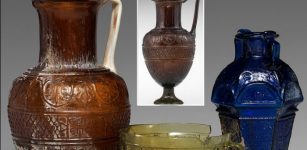 Ennion: Ancient Master Of Glassblowing And His Legacy
Artifacts | Dec 7, 2020
Ennion: Ancient Master Of Glassblowing And His Legacy
Artifacts | Dec 7, 2020 -
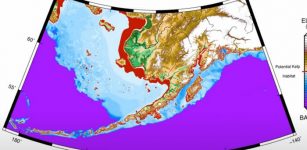 Did First Settlers From Asia Reached America By ‘Stepping Stone’ Migration Across Bering Sea?
Archaeology | Apr 30, 2021
Did First Settlers From Asia Reached America By ‘Stepping Stone’ Migration Across Bering Sea?
Archaeology | Apr 30, 2021 -
 Carbonized Herculaneum Papyrus Begins Revealing Its Ancient And Historical Secrets
Artifacts | Apr 24, 2024
Carbonized Herculaneum Papyrus Begins Revealing Its Ancient And Historical Secrets
Artifacts | Apr 24, 2024 -
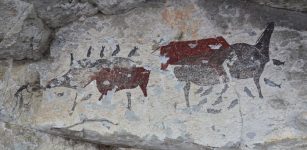 Unicorns In Southern Africa: The Fascinating Story Behind One-Horned Creatures In Rock Art
Featured Stories | Jun 24, 2023
Unicorns In Southern Africa: The Fascinating Story Behind One-Horned Creatures In Rock Art
Featured Stories | Jun 24, 2023 -
 The Phrase Hip Hip Hooray Has Ancient Roots
Ancient History Facts | Jun 6, 2018
The Phrase Hip Hip Hooray Has Ancient Roots
Ancient History Facts | Jun 6, 2018 -
 First AI-Based Method For Dating Archaeological Remains Developed By Researchers
Archaeology | Aug 23, 2022
First AI-Based Method For Dating Archaeological Remains Developed By Researchers
Archaeology | Aug 23, 2022 -
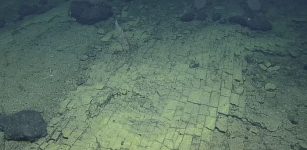 Strange Ancient Underwater Yellow Brick Road Discovered Of The Hawaiian Islands
News | May 11, 2022
Strange Ancient Underwater Yellow Brick Road Discovered Of The Hawaiian Islands
News | May 11, 2022 -
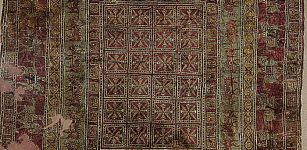 Pazyryk Carpet: Extraordinary Craftsmanship Of Siberian Iron Age Textile Dyers
Archaeology | Mar 5, 2021
Pazyryk Carpet: Extraordinary Craftsmanship Of Siberian Iron Age Textile Dyers
Archaeology | Mar 5, 2021 -
 How Human Ancestors Used Fire – New Methods Give Answers
Archaeology | Nov 2, 2022
How Human Ancestors Used Fire – New Methods Give Answers
Archaeology | Nov 2, 2022 -
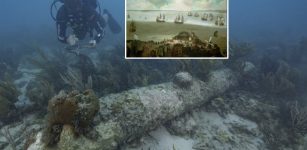 Sunken 18th-Century British Warship HMS Tyger Found In The Dry Tortugas National Park, Florida
Archaeology | Mar 19, 2024
Sunken 18th-Century British Warship HMS Tyger Found In The Dry Tortugas National Park, Florida
Archaeology | Mar 19, 2024 -
 Controversial ‘Anomaly’ Discovered On Mount Ebal Could Be Biblical Joshua’s Altar
Biblical Mysteries | Apr 6, 2020
Controversial ‘Anomaly’ Discovered On Mount Ebal Could Be Biblical Joshua’s Altar
Biblical Mysteries | Apr 6, 2020 -
 King Tut’s Cosmic Dagger Was Not Made In Egypt – New Study Reveals
Archaeology | Feb 24, 2022
King Tut’s Cosmic Dagger Was Not Made In Egypt – New Study Reveals
Archaeology | Feb 24, 2022 -
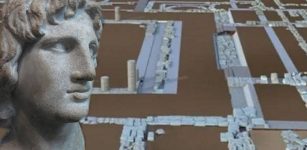 Visit The Palace Where Alexander The Great Was Born In Pella
Archaeology | Oct 21, 2020
Visit The Palace Where Alexander The Great Was Born In Pella
Archaeology | Oct 21, 2020 -
 Why Is Roulette Called The Devil’s Game?
Ancient History Facts | Apr 3, 2018
Why Is Roulette Called The Devil’s Game?
Ancient History Facts | Apr 3, 2018 -
 Remarkable Ancient High-Tech Genetic Disc Could Re-Write Ancient History
Artifacts | Sep 15, 2014
Remarkable Ancient High-Tech Genetic Disc Could Re-Write Ancient History
Artifacts | Sep 15, 2014 -
 Mystery Of The Lost Golden Chain Of Huayna Capac: Will The Ancient Inca Treasure Ever Be Found?
Artifacts | Dec 30, 2020
Mystery Of The Lost Golden Chain Of Huayna Capac: Will The Ancient Inca Treasure Ever Be Found?
Artifacts | Dec 30, 2020 -
 Helmet Of Meskalamdug – Sumerian King Of The First Dynasty Of Ur
Artifacts | Apr 14, 2016
Helmet Of Meskalamdug – Sumerian King Of The First Dynasty Of Ur
Artifacts | Apr 14, 2016



